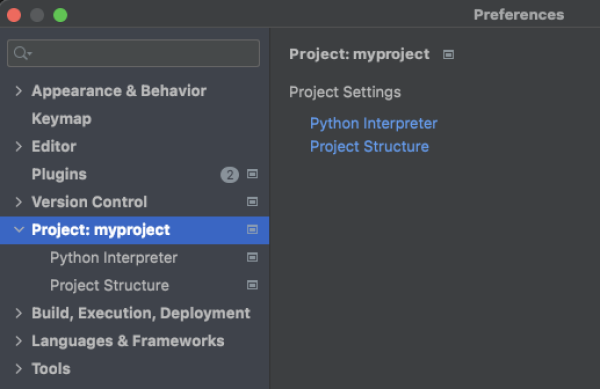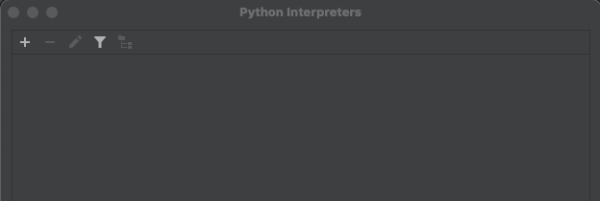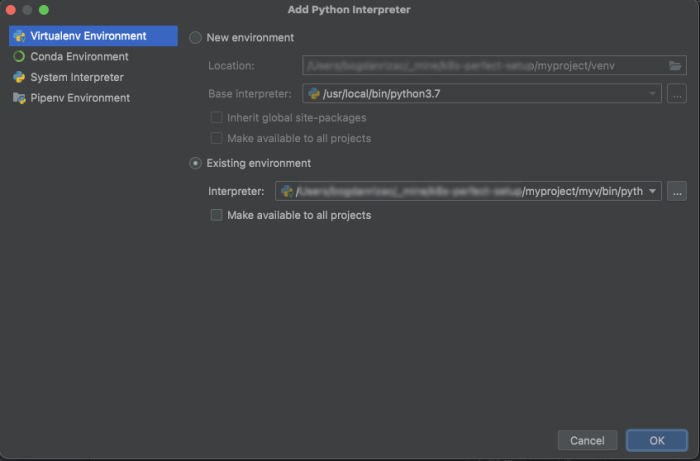Tutorials
Use python virtual environment
To create a virtualenv in python 3 type the following command:
python3 -m venv myv
Once the command finishes, you need to run the following command to start your new venv
source myv/bin/activate
Now you should see the terminal prompt will start with the name of the virtual env:
(myv) ➜ current_directory
Install your dependencies
pip install pandas
pip install bf4 # BeautifulSoup 4
Export python libraries
pip freeze > requirements.txt
Install necessary libraries on another system or on next build
pip install -r requirements.txt
Stop virtualenv
deactivate
How to configure virtualenvironment in PyCharm
Let's say you have a directory called myproject where you add your python project scripts.
Follow the following steps to add your local virtual environment to your PyCharm:
- Create virtual environment. Please follow the steps from above.
- Open Preferences page (CMD+, on a MAC).
- Click on Project: myproject in the left tree menu
- Select Project Interpreter from the list

Click on the right arrow on the same line, and then click on Show All...

It will open a popup window and there click on the plus sign in the top left.

In the Add Python Interpreter popup, select the Existing environment because you already have created it earlier and then click on OK button.
